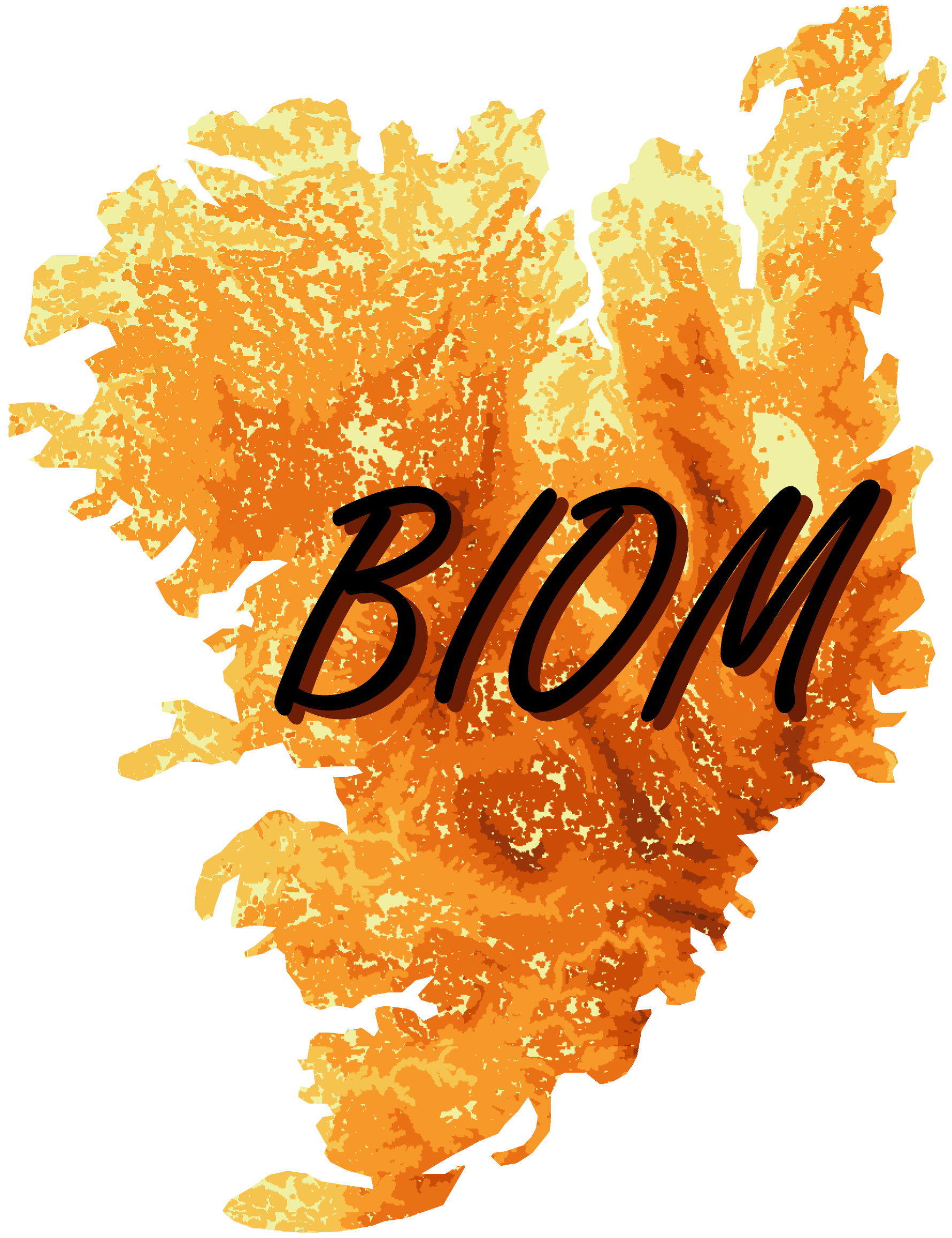Density of Myrmica nests in bogs: the case of the Jouvion bog (Massif central, France)
DOI:
https://doi.org/10.18145/biom.v1i1.255Keywords:
The Auvergne region, density, ants, Myrmica, nests, bogsAbstract
As part of a study to evaluate the conservation status of Maculinea alcon alcon stations in the Regional natural Park of the Volcanoes of Auvergne, a study was conducted in July 2015 to evaluate the density of host ant nests (Myrmica sp.) on the Jouvion peat bog. The study method consisted of two phases: trapping using 249 protein baits distributed within grids having 16m² meshes and then a search for anthills within grid where Myrmica sp. had been found in the previous phase. A total of 194 Myrmica nests were detected. The results provide data in terms of nest density for three species: Myrmica rubra, Myrmica ruginodis and Myrmica scabrinodis, with an average of 2.13, 0.65 and 2.08 nests per 100 m2 respectively. These densities seem low in comparison with existing bibliographic data. However, the heterogeneity of inventory and density estimation methods complicates the comparison between studies. Our results indicate that in Jouvion, the overlap between the host plants and the host anthills of Maculinea alcon alcon is low, which could at least partly explain the decline of the species observed on this site since 2011.
References
Belenguier L., Kreder M., Bachelard P., Delsinne T., Lombard V., Poussin M., Soissons A. & Galkowski C., 2018. Contribution à la connaissance des fourmis d’Auvergne : premier inventaire et répartition des fourmis de zones humides (Hymenoptera Formicidae). Bulletin de la Société Linnéenne de Bordeaux, nouv. série n° 46, 153(2-4), 2018 : 221-234.
Belenguier L., Kreder M. & Pont L., 2017. Évaluation de l’état de conservation des stations de l’Azuré des mouillères (Maculinea alcon alcon). Volume 3: Application de la méthode sur le Parc naturel régional des Volcans d’Auvergne. Rapport d’étude Syndicat mixte du parc naturel régional des Volcans d’Auvergne, 16p.+ annexes.
Blatrix R., Galkowski C., Lebas C. & Wegnez P., 2013. Guide des fourmis de France. Delachaux et Niestlé, 287 p.
Braschler B. & Baur B., 2003. Effects of experimental small-scale grassland fragmentation on spatial distribution, density, and persistence of ant nests. Ecological Entomology, 28 : 651-658.
Dupont P., 2010. Plan national d’actions en faveur des Maculinea. Office pour les insectes et leur environnement, Ministère de l’Ecologie, du Développement durable, des Transports et du Logement, 138 p.
Elmes G.W., 1974. The spatial distribution of a population of two ant species living in limestone grassland, Pedobiologia 14 : 412-418.
Elmes G.W., 1978. Populations of Myrmica (Formicidae) living on different types of Calluna moorland - A semi-natural habitat of southern England. Memorabilia Zoologica, 29 : 41-60.
Elmes G.W. & Thomas J.A., 1987. Le genre Maculinea. In Les papillons de jour et leurs biotopes. Espèces -Dangers qui les menacent -Protection. Ligue suisse pour la protection de la nature, Bâle : 354-356.
Elmes G.W., Thomas J.A., Wardlaw J.C., Hochberg M.E., Clarke R.T. & Simcox D.J., 1998. The ecology of Myrmica ants in relation to the conservation of Maculinea butterflies. Journal of Insect Conservation, 2 : 67-78.
Elmes G.W. & Wardlaw J.C., 1982a. A population of the ants Myrmica sabuleti and Myrmica scabrinodis, living at two sites in the south of England. I. A comparison of colony populations. Journal of Animal Ecolology, 51 : 651-664.
Elmes G.W. & Wardlaw J.C., 1982b. Variations in populations of Myrmica sabuleti and M. scabrinodis (Formicidae : Hymenoptera) living in Southern England. Pedobiologia 23 : 90-97.
Forgeot D., 2007. Densité des nids et activité des fourmis hôtes de Maculinea alcon, sur la Lande du Camp, influence de l’habitat et du mode de gestion. SyMEL, Rapport de Master 2 Spécialité Conservation et Restauration des Ecosystèmes, Université de Metz, 51p.
Galkowski C. & Lebas C., 2015. Guide d’identification des fourmis du genre Myrmica. Studio Pixart SRL Unipersonale. DREAL Auvergne et Antarea, 56 p.
Kaufmann B., Mercier J.L., Itrac-Bruneau R. & Chmargounof G., 2014. Protocole d’échantillonnage simple permettant d’évaluer la présence et l’importance des Myrmica au sein des communautés de fourmis. Plan National d’Actions en faveur des Maculinea. Université Claude Bernard Lyon I, Université François Rabelais Tours, Office pour les insectes et leur environnement, 6 p.
Lebas Cl.. Clés de reconnaissance des fourmis Françaises. http://cle.fourmis.free.fr/
Rozier Y., 1999. Contribution à l’étude de la Biologie de la Conservation de Maculinea sp. (Lepidoptera : Lycaenidae) dans les zones humides de la vallée du Haut-Rhône. UMR CNRS 5558. Laboratoire de Biométrie et Biologie évolutive, Université Claude Bernard - Lyon I, 230 p.
Seifert B., 1986. Vergleichende Untersuchungen zur Habitatwahl von Ameisen (Hymenoptera : Formicidae) im mittleren und südlichen Teil der DDR. Abh. Ber. Naturkundemus. Görlitz, 59(5) : 1-124
Seifert B., 1988. A taxonomic revision of the Myrmica species of Europe, Asia Minor, and Caucasia (Hymenoptera, Formicidae). Abh. Ber. Naturkundemus. Görlitz 62(3) : 1-75.
Soissons A. & Bachelard P., 2013. Déclinaison régionale du plan national d’actions en faveur des Maculinea - Auvergne 2014-2018. Conservatoire d’Espaces Naturels d’Auvergne, Société d’Histoire Naturelle Alcide d’Orbigny, 69p.
Thomas J. A., 1984. The behavior and habitat requirements of Maculinea nausithous (the dusky large blue butterfly) and M. telejus (the scarse large blue) in France. Biological Conservation 28 : 325-347.
Wynhoff I., 1996. International Maculinea Workshop. Dutch butterfly Conservation, De Vlinderstichting, 71p.



